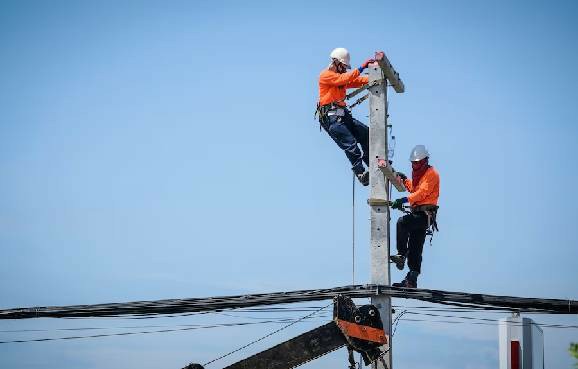


 349,500 Offered Certificates
349,500 Offered Certificates
 24/7 Online Training
24/7 Online Training
 Money Back Guarantee
Money Back Guarantee
 Fully Accredited Courses
Fully Accredited Courses

Created at: 22-02-2025 14:26
Working at heights can be a hazardous endeavor, yet it is a daily reality for many tradespeople and workers in various industries. While these jobs are critical to our infrastructure and economy, they also come with significant risks. Many accidents occur due to preventable human errors. In this blog post, we will explore the most common mistakes workers make when working at heights and how effective Working at Heights training can substantially mitigate these risks.
Falling from heights is one of the leading causes of workplace injuries and fatalities. According to safety statistics, falls account for a significant percentage of all workplace accidents. The absence of proper safety protocols, inadequate training, and negligence towards equipment maintenance often contribute to these incidents.
One of the most frequent errors is the incorrect usage of personal protective equipment. This includes not wearing a safety harness, not securing it properly, or using defective gear. A safety harness must fit snugly and be attached to a reliable anchor point.
Example: A worker fails to fasten the harness correctly while on a roof. When they lean too far over the edge, the harness does not catch them, resulting in a fall.
Before embarking on any task at height, a comprehensive risk assessment should be conducted. This involves identifying potential hazards, determining the necessary safety measures, and ensuring all workers understand the risks involved.
Example: A team begins work on scaffolding without assessing the stability of the ground it is erected on, leading to its collapse.
Another common oversight is not securing tools and materials at height. Dropped tools can seriously injure someone on the ground and can create unsafe conditions.
Example: A worker sets down a power tool without securing it, which later falls off the edge of the scaffold, hitting a colleague below.
Many workers may not have received adequate Working at Heights training. Knowledge about equipment use, safety practices, and fall prevention are essential to perform duties safely.
Example: A laborer operates a lift without understanding its controls due to insufficient training, leading to unsafe maneuvering and a potential accident.
Working at heights should also take into account weather conditions. Rain, wind, and other adverse conditions can significantly increase the risk of accidents.
Example: A worker continues repairs on a rooftop during a windy day, allowing strong gusts to throw them off balance, increasing the risk of a fall.
Investing in Certified Working at Heights Training can address these common pitfalls significantly.
Training courses emphasize the importance of correctly using and maintaining PPE. Workers learn how to choose the right equipment for their tasks and ensure it is in good condition.
Working at Heights courses equip workers with skills to perform thorough risk assessments, enabling them to spot potential hazards before they become an issue.
Training programs also focus on safe storage and securing techniques for tools and equipment, which helps prevent accidents related to dropped items.
Through rigorous Working at Heights safety courses, workers learn established protocols that need to be followed strictly to ensure their safety and that of their colleagues.
Part of the training includes learning how to assess environmental factors that could affect safety while performing tasks at heights.
Attending and successfully completing a certified Working at Heights Course Online not only provides workers with vital knowledge but also gives employers peace of mind regarding safety compliance. In cities like Dublin, Cork, and Galway, qualified trainers offer comprehensive programs that meet safety standards.
Ignoring the need for training can lead to severe consequences, including debilitating injuries and even fatalities. Besides the physical costs, organizations can face legal repercussions, financial burdens from lost productivity, and damage to their reputation.
Investing time and resources into Working at Heights Certification Ireland is not merely a regulatory checkbox but a crucial step in ensuring the safety and well-being of all employees involved in height work. By addressing the common mistakes discussed, and promoting a safety culture through training, together we can prevent accidents and save lives. For more information or to enroll in a Working at Heights safety course, visit our website or contact us at [email protected].